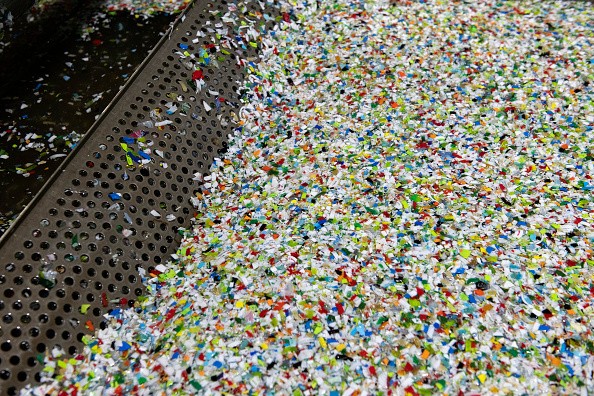Recent research shows the proof-of-concept for an altogether new method to plastic recycling, which is inspired by how nature naturally recycles the components of organic polymers found in our environment.
The method is based on the fact that proteins in organic polymers are continually broken down into pieces and reassembled into new proteins while maintaining the building blocks' structural integrity. So, in essence, we must think smaller when recycling plastic - an artificial polymer - without damaging it.
Breaking Down Molecules

Proteins are essential organic molecules that serve as the building blocks for all living things. They're amino acids, which are long chains of molecules (or monomers), and experts believe that the way these molecules may be broken up and reconfigured reveals a possible approach for recycling synthetic polymers.
"A protein is like a string of pearls, with each pearl representing an amino acid," explains Simone Giaveri, a materials scientist at the École Polytechnique fédérale de Lausanne (EPFL) in Switzerland.
"Each pearl is colored differently, and the color sequence affects the string structure and, as a result, the characteristics of the pearl. This is because protein chains break down into their constituent amino acids in nature, and cells reassemble these amino acids to produce new proteins - or, to put it another way, new strings of pearls with a different color sequence."
Read also: Sun's Heat Can Churn Plastics Into Organic Particles: How Does it Affect the Environment?
Inspired by Natural Processes
Nature-inspired circular-economy recycling, or NaCRe for short, is the name given to the researchers' concept.
The team split proteins into amino acids in lab experiments, then assembled them into new proteins with varied shapes and functions. In one example, they converted silk proteins into green fluorescent protein, a luminous tracer utilized in biomedical studies. The quality of the proteins stays unchanged despite the deconstruction and rebuilding.
According to the team's study, the mechanisms that naturally exist in proteins may be applied to plastics as well, albeit creating and scaling up the requisite technologies would take some time.
Although there are significant variations between natural and manufactured polymers to consider, the researchers believe that this new technique to recycling is viable - and that it would keep materials in use for the longest period conceivable.
"A completely different attitude is required," says EPFL materials scientist Francesco Stellacci. "Polymers are strings of pearls, but synthetic polymers are typically constructed of pearls of the same color, and the order of color rarely matters when the color is different."
"We also don't have an efficient technique to construct synthetic polymers from various color pearls in a way that allows us to regulate their sequence."
Leaving Residues
Even biodegradable plastics produce waste residue that must be stored or buried after the recycling process, with the typical environmental consequences of land use and pollution. The new technique could be able to help with that.
According to the experts, a person throws away about two metric tons of plastic on average throughout a 70-year lifespan, which is a tremendous amount of garbage when you consider there are over 8 billion people on the globe right now.
And, while we're making progress in addressing our plastic pollution problem, we're still far from being done. If we prevent plastics from causing additional harm to our environment and health, we must make a dramatic transformation in our thoughts and actions.
"In the future, sustainability will require taking up cycling to its logical conclusion, combining a variety of things and recycling the resulting combination to create a new material every day," Stellacci adds. "This is something that nature already does."
Also Read: Global Plastic Pollution is Reaching a Tipping Point: Irreversible Damage Inevitable
For more environmental news, don't forget to follow Nature World News!
© 2025 NatureWorldNews.com All rights reserved. Do not reproduce without permission.





